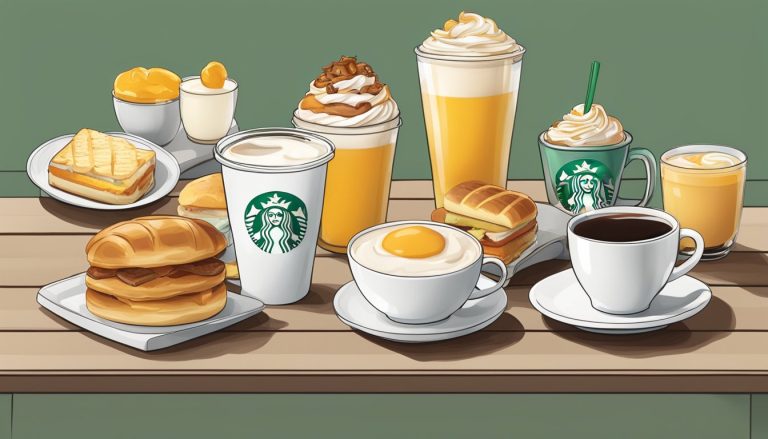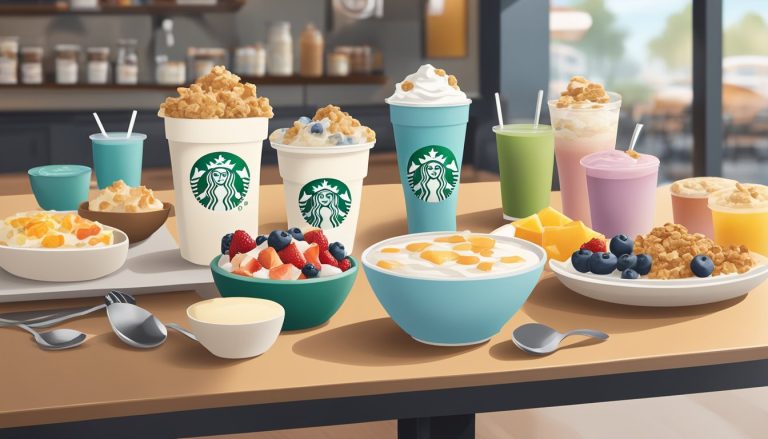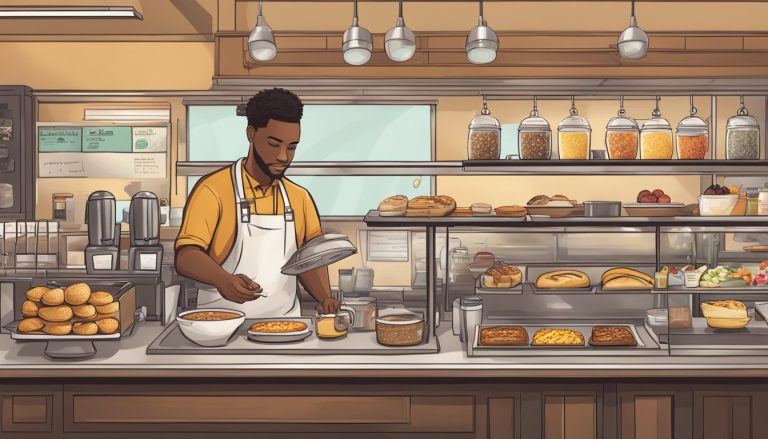Starbucks has mastered the art of packaging psychology, particularly with its Breakfast Blend coffee. The company’s packaging design goes beyond mere aesthetics, incorporating subtle cues that tap into consumer psychology and brand storytelling.
Starbucks’ Breakfast Blend packaging features hidden words and images that reference the coffee’s unique history and characteristics, creating an engaging visual experience for customers. This clever design strategy not only catches the eye but also encourages customers to spend more time examining the product, fostering a deeper connection with the brand.
The evolution of Starbucks’ packaging reflects the company’s commitment to innovation and customer engagement. From simple stamps on paper bags to colorful graphics on flat-bottom coffee bags, Starbucks has continually refined its approach to packaging design. This attention to detail extends to the Breakfast Blend, where the packaging serves as a canvas for storytelling, inviting customers to explore the coffee’s origins and flavor profile.
Starbucks Brand Identity

Starbucks has cultivated a distinct brand identity centered on quality coffee, community, and a welcoming atmosphere. This identity has evolved over time while maintaining core elements that resonate with customers globally.
History and Evolution
Starbucks began as a small coffee shop in Seattle in 1971. Its brand identity initially focused on providing premium coffee beans and equipment. In the 1980s, Howard Schultz joined the company and transformed it into a coffeehouse chain inspired by Italian espresso bars.
The iconic green logo, featuring a twin-tailed siren, became a symbol of quality and consistency. Starbucks expanded rapidly in the 1990s and 2000s, maintaining its commitment to ethically sourced coffee and a “third place” between work and home.
Over time, Starbucks broadened its offerings to include food, merchandise, and digital services. The brand adapted to local preferences while preserving its core identity.
The Psychology Behind the Brand
Starbucks’ brand psychology revolves around creating positive emotional associations. The company offers more than just coffee; it provides an experience.
The store design, with warm colors and comfortable seating, fosters a sense of belonging. Baristas writing customers’ names on cups personalizes interactions and builds connections.
Starbucks’ storytelling emphasizes its coffee expertise and ethical sourcing practices. This narrative appeals to consumers’ desire for quality and social responsibility.
The brand leverages the “Starbucks effect,” where holding their cup becomes a status symbol. This taps into customers’ need for social belonging and self-expression.
The Science of Packaging

Packaging design influences consumer perceptions and purchase decisions through visual and tactile elements. Research reveals how colors, materials, and textures impact product appeal and perceived value.
Color Theory and Consumer Behavior
Colors evoke specific emotions and associations in consumers. Red stimulates appetite and excitement, making it effective for food packaging. Blue conveys trust and reliability, often used for financial or healthcare products. Green signals freshness and eco-friendliness, popular for natural or organic items.
Starbucks utilizes a rich color palette in its breakfast packaging. Their signature green creates brand recognition and implies sustainability. Warm browns and oranges on pastry wrappers suggest comfort and appetizing flavors.
Studies show that color can influence taste perception. Packaging hues may enhance or alter the perceived flavor of food products.
Materials and Design
Packaging materials significantly impact consumer impressions of product quality. Heavier or textured packaging often signals premium products. A study found textured packaging increased perceived value by 37%.
Starbucks employs various materials in its breakfast packaging:
- Recyclable paper bags for pastries
- Clear plastic for sandwiches, showcasing freshness
- Insulated wraps for hot items, maintaining temperature
Design elements like embossing or matte finishes add tactile appeal. These features encourage customers to interact with products, increasing engagement and purchase likelihood.
Packaging shape also affects perceptions. Unique or ergonomic designs stand out on shelves and can command higher prices. Starbucks’ distinct cup shapes have become iconic brand identifiers.
Product Offerings

Starbucks provides a diverse range of breakfast options and coffee selections to cater to different customer preferences. These offerings are designed to complement each other and create a satisfying morning experience.
Breakfast Sandwiches and Pairings
Starbucks offers a variety of breakfast sandwiches to suit different tastes. These include classics like egg and cheese on a croissant, as well as more unique options like spinach and feta wraps.
The sandwiches are often paired with specific coffee blends to enhance flavors. For example, a savory bacon and gouda sandwich might be recommended with a bold roast.
Packaging for these items is designed to maintain freshness and temperature. The sandwiches are typically wrapped in paper with a clear window to showcase the contents.
Whole-Bean and Roasted Coffee Selection
Starbucks is renowned for its extensive coffee selection. Whole-bean options allow customers to grind at home for maximum freshness.
Roasted coffees come in various strengths and flavor profiles. Light roasts offer bright, crisp notes, while dark roasts provide rich, robust flavors.
Packaging for whole beans and ground coffee features airtight seals to preserve freshness. Each blend has distinct packaging with color-coded labels to help customers identify their preferred roast level.
Starbucks also offers seasonal and limited-edition roasts, often in specially designed packaging to highlight their unique characteristics.
Consumer Engagement Strategies

Starbucks utilizes psychological principles to create engaging packaging and foster customer loyalty. The company taps into coffee culture and leverages personalization to build deeper connections with consumers.
Leveraging Coffee Culture
Starbucks’ breakfast packaging reflects coffee culture aesthetics and rituals. Warm colors and rustic textures evoke cozy cafe vibes. Phrases like “Rise and Shine” tap into morning routines.
Seasonal designs create a sense of novelty and timeliness. Limited-time offerings spark FOMO (fear of missing out) among customers. This urgency encourages more frequent visits and social media sharing.
Packaging often features coffee-related imagery and terminology. This reinforces Starbucks’ brand identity as a coffee authority. It also appeals to customers’ desire to feel knowledgeable about coffee.
Personalization and Customer Loyalty
Starbucks employs personalization tactics to enhance customer experience. Names on cups make interactions feel individualized. This small touch creates a sense of recognition and belonging.
The Starbucks Rewards program ties into packaging through scannable codes. Members earn points and unlock exclusive offers. This gamification aspect keeps customers engaged and coming back.
Customizable options allow customers to tailor orders to their preferences. This flexibility is reflected in packaging that accommodates various sizes and add-ons. Customers feel their unique needs are understood and met.
The In-Store Experience

Starbucks carefully crafts its in-store atmosphere to engage customers’ senses and streamline their visit. The company’s strategic approach combines inviting ambiance with efficient service.
Ambiance and Aromas
Starbucks stores feature a warm, welcoming environment designed to encourage lingering. Soft lighting, comfortable seating, and earthy color schemes create a cozy coffeehouse feel. The aroma of freshly brewed coffee permeates the air, enticing customers and enhancing their perception of quality.
Music plays a crucial role, with carefully curated playlists setting a relaxed mood. Baristas often greet regulars by name, fostering a sense of community. Local artwork and region-specific decor elements help each location feel unique while maintaining brand consistency.
Efficiency and Convenience
Starbucks prioritizes quick service to accommodate busy customers. Store layouts are optimized for smooth traffic flow, with clear signage guiding patrons through the ordering process. Mobile ordering and payment options allow customers to skip lines entirely.
The company’s app streamlines transactions and rewards frequent visitors. Drive-thru locations cater to on-the-go consumers, while some stores offer dedicated pickup areas for mobile orders. Baristas are trained to prepare drinks swiftly without sacrificing quality, ensuring a consistent experience across visits.
Starbucks also stocks grab-and-go food items near checkout areas, encouraging impulse purchases and providing convenient meal options for time-pressed patrons.
Market Position and Competition
Starbucks dominates the coffee industry with its strong brand and widespread presence. The company’s market leadership stems from its premium positioning and ability to shape consumer behavior.
Analyzing the ‘Starbucks Effect’
The ‘Starbucks Effect’ refers to the company’s influence on local economies and consumer habits. When Starbucks enters a new area, it often increases property values and foot traffic.
This phenomenon extends to consumer behavior. Starbucks has conditioned customers to pay premium prices for coffee drinks, creating a new standard in the industry.
The company’s ubiquity and consistent branding have made it a cultural touchstone. Starbucks cups have become status symbols and Instagram props, further reinforcing the brand’s power.
Competitive Analysis
Starbucks holds a commanding 36.7% market share in the retail coffee and snacks industry, far outpacing its rivals. Its closest competitors include Dunkin’ Donuts, Costa Coffee, and local independent cafes.
Key competitive advantages:
- Global brand recognition
- Premium positioning
- Extensive store network
- Loyalty program
- Product innovation
While Starbucks leads in most markets, it faces challenges in some regions. In Australia, for example, local coffee culture has limited Starbucks’ success.
Emerging threats include the rise of specialty coffee shops and increased competition in the breakfast segment. To maintain its position, Starbucks continues to innovate in product offerings and store design.




